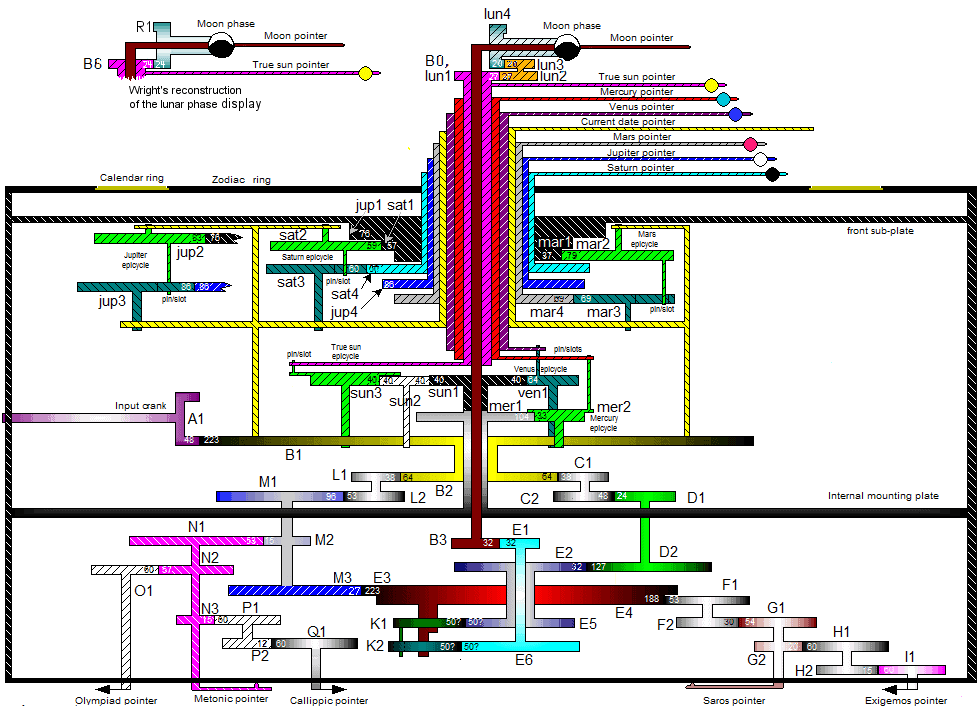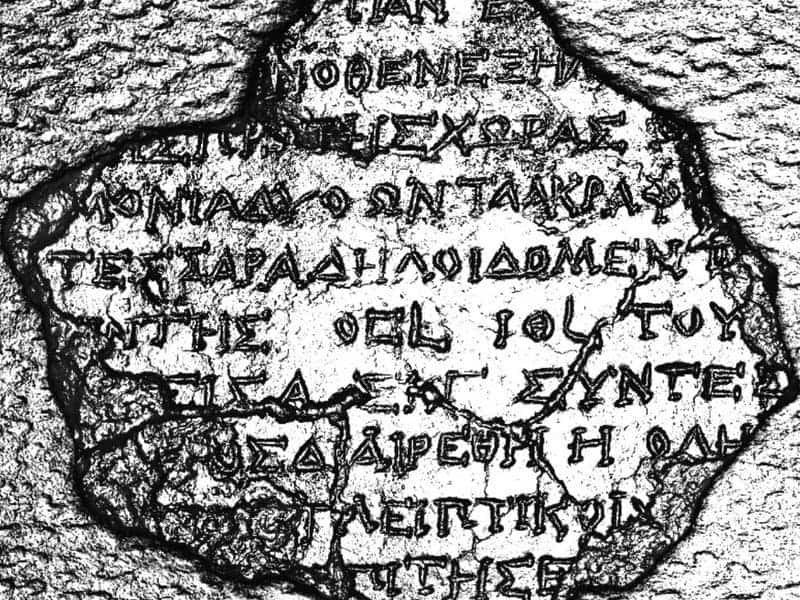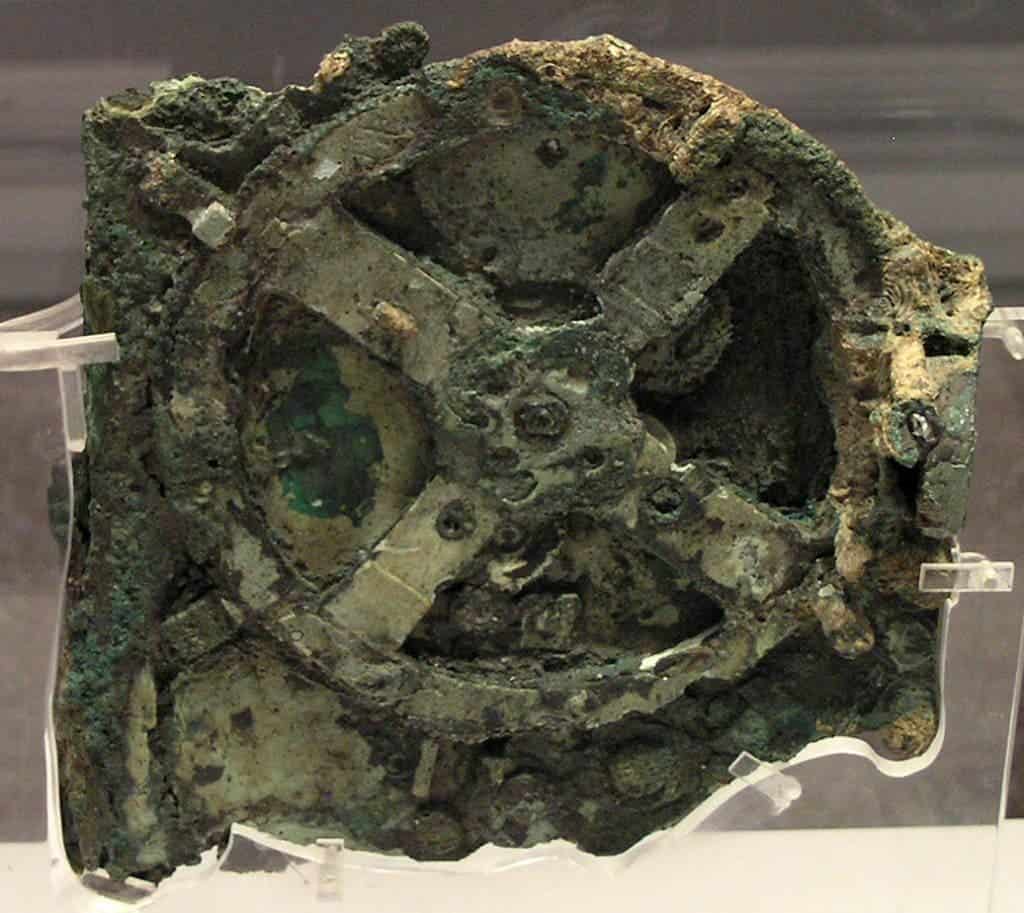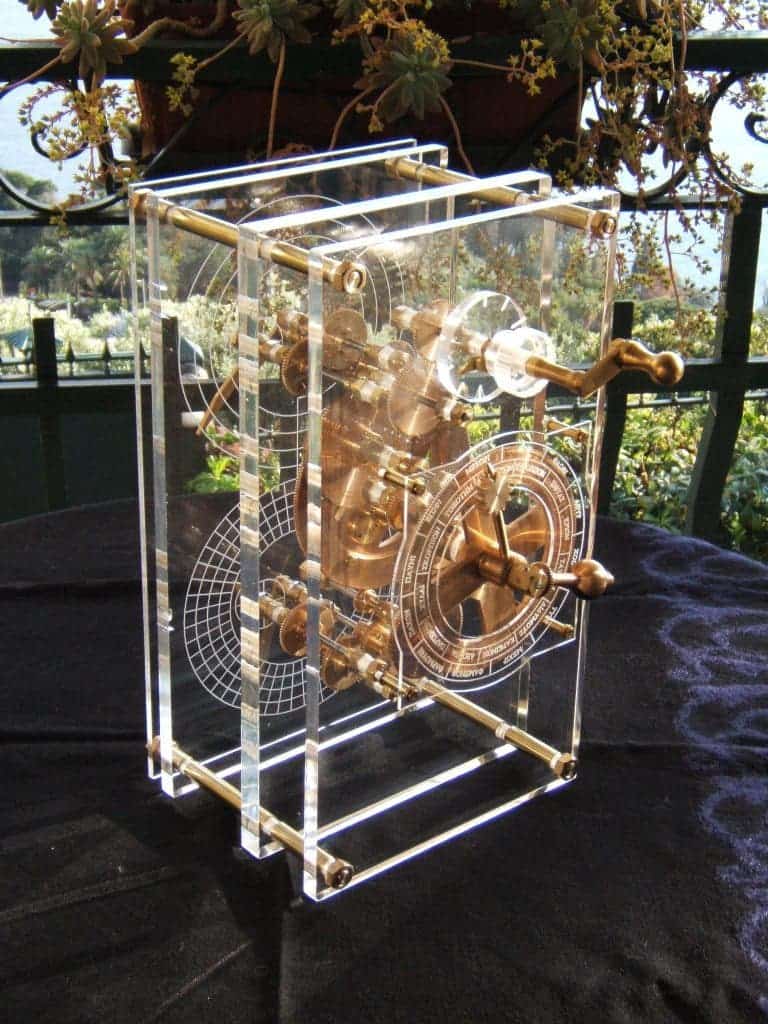Since it was found in a shipwreck off the coast of Crete in 1901, the intricate Antikythera Mechanism has puzzled scientists. Way ahead of its time, this complex mechanism of revolving bronze gears and display was used by the ancient Greeks more than 2,000 years ago to calculate the positions of the stars and planets. Now, a decade-long investigation suggests the Greeks used the world’s oldest computer for astrological purposes, as well.
The level of craftsmanship of the ancient computer, now housed at the National Archaeological Museum in Athens, is simply mind boggling when you factor its age. Though obscured by corrosion after it was lost for thousands of years at the bottom of the sea, the Antikythera Mechanism still has visible gears with neat triangular teeth not all that different from those in modern clocks, and a ring divided into degrees.
The mechanism featured a handle on the side for winding the mechanism forward or backward. As an ancient Greek navigator turned the handle, trains of interlocking gear wheels drove at least seven hands at various speeds. Again, that’s very similar to how a clock works, only instead of hours, minutes, and seconds, the Antikythera Mechanism would show the position of the Sun, the moon, and each of the five planets visible to the naked eye (Mercury, Venus, Mars, Jupiter and Saturn). A rotating ball showed the current phase of the Moon and inscriptions explained which star rose and set on a particular given date. On the back of the case, two dials showed the calendar and the timing of lunar and solar eclipses.
Nothing as close to this level of sophistication would appear in over a thousand years.
Besides navigation, the Antikythera Mechanism was also likely used for more esoteric purposes, an international team of researchers reported at the Katerina Laskaridis Historical Foundation Library in Greece the other day.
For more than ten years, researchers have been trying to decipher the tiny engravings on the mechanism. The years of water and wildlife exposure have taken their toll and corrosion obscured most of the researchers’ efforts. Thanks to cutting-edge imaging techniques like X-ray scanning, the team was able to see past the many layers of accumulated sediments and paint a picture of what the fragments belonging to the ancient computer must have looked like before they were spoiled by the hand of time.

Schematic showing the level of intricacy involved in turning the more than two dozen gears of the device. Credit: Wikimedia Commons
In total, 3,500 characters of finely inscribed text were surfaced. These were engraved on the inside covers and visible front and back sections of the mechanism.
“Now we have texts that you can actually read as ancient Greek, what we had before was like something on the radio with a lot of static,” said team member Alexander Jones, a professor of the history of ancient science at New York University.
“It’s a lot of detail for us because it comes from a period from which we know very little about Greek astronomy and essentially nothing about the technology, except what we gather from here,” he said. “So these very small texts are a very big thing for us.”

Inscriptions on the back cover of Fragment 19. These were previously obscured by sediments. Credit: Antikythera Mechanism Research Project
The text was not like a manual, but rather like a label that described what the whole mechanism does. “It’s not telling you how to use it, it says ‘what you see is such and such,’ rather than ‘turn this knob and it shows you something,'” Jones said. The user of the device was likely very educated.
Jones and colleagues confirmed some of the mechanisms had the function of predicting solar and lunar eclipses, events which the Ancient Greeks thought could impact human affairs. As such, besides its primarily astronomical purpose, the Antikythera Mechanism was also trusted as a tool for reading the future.
Other important findings researchers could infer from the newly uncovered text is that the Antikythera Mechanism was made on the island of Rhodes by at least two peoples, judging from how the engravings were etched. Archeologists are still searching for the other missing fragments at the site of the ancient shipwreck. If these are found, maybe the Antikythera Mechanism could turn out to be even more complex than we think it is.
The results were published in a special issue of the journal Almagest.











